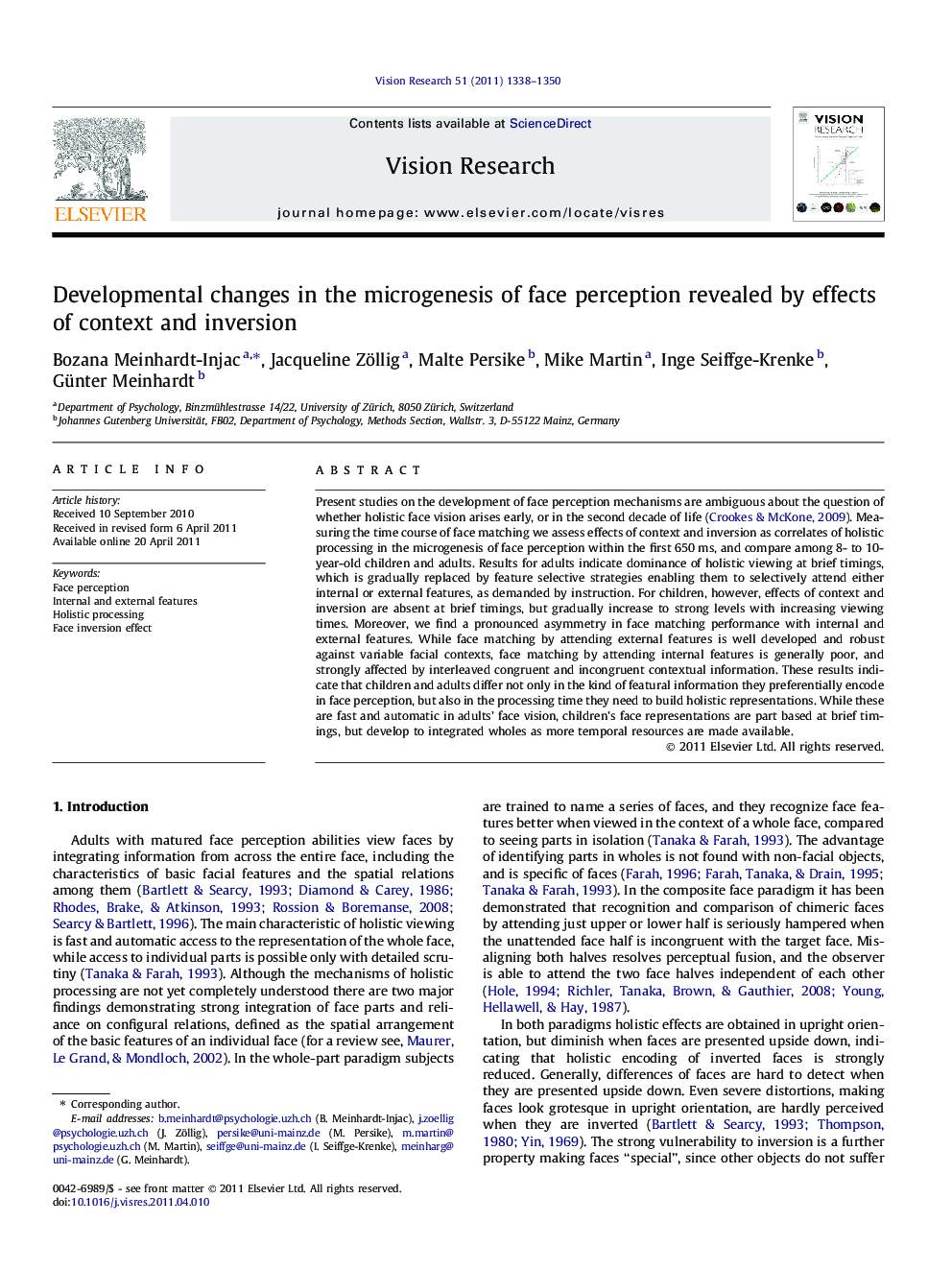| Article ID | Journal | Published Year | Pages | File Type |
|---|---|---|---|---|
| 4034310 | Vision Research | 2011 | 13 Pages |
Present studies on the development of face perception mechanisms are ambiguous about the question of whether holistic face vision arises early, or in the second decade of life (Crookes & McKone, 2009). Measuring the time course of face matching we assess effects of context and inversion as correlates of holistic processing in the microgenesis of face perception within the first 650 ms, and compare among 8- to 10-year-old children and adults. Results for adults indicate dominance of holistic viewing at brief timings, which is gradually replaced by feature selective strategies enabling them to selectively attend either internal or external features, as demanded by instruction. For children, however, effects of context and inversion are absent at brief timings, but gradually increase to strong levels with increasing viewing times. Moreover, we find a pronounced asymmetry in face matching performance with internal and external features. While face matching by attending external features is well developed and robust against variable facial contexts, face matching by attending internal features is generally poor, and strongly affected by interleaved congruent and incongruent contextual information. These results indicate that children and adults differ not only in the kind of featural information they preferentially encode in face perception, but also in the processing time they need to build holistic representations. While these are fast and automatic in adults’ face vision, children’s face representations are part based at brief timings, but develop to integrated wholes as more temporal resources are made available.
► Adult face vision moves from holistic to feature selective. ► Child face vision moves from part-based to holistic. ► External features dominate children’s face perception.
